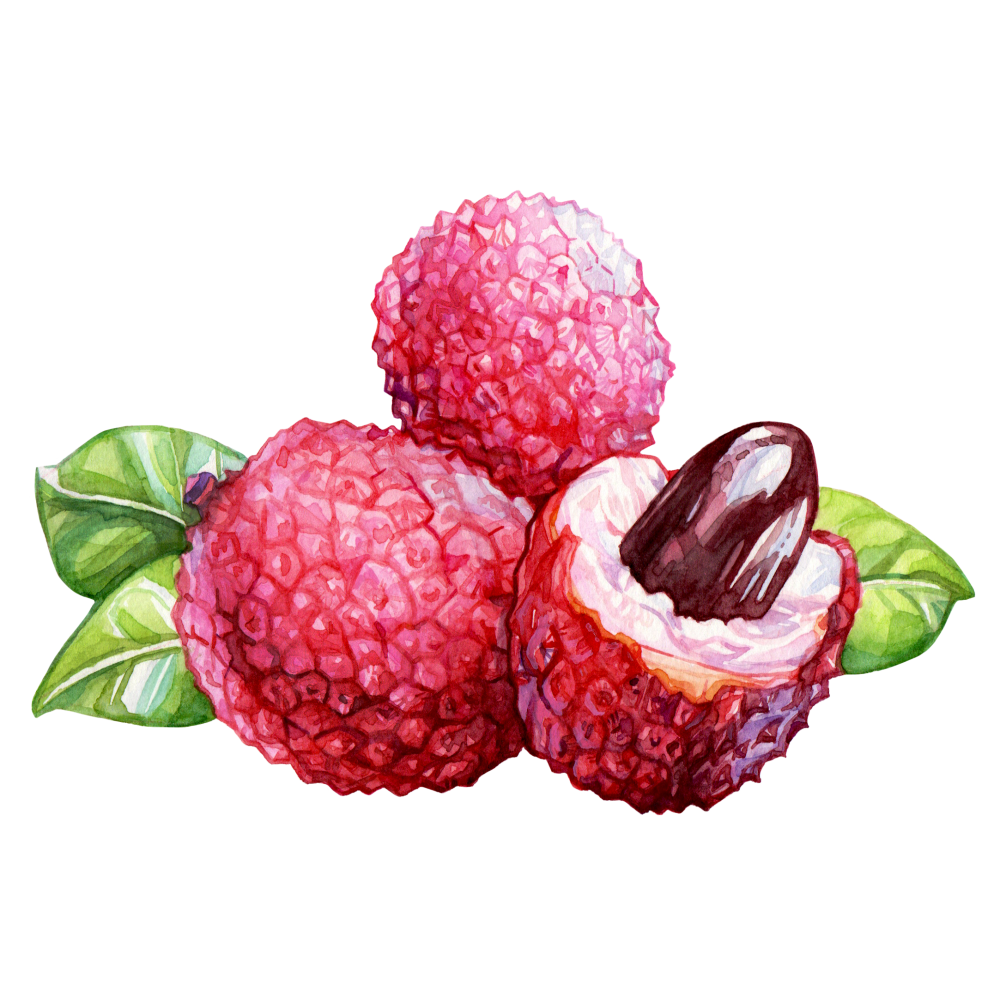Lychee

Latin name: Litchi chinensis
Uses: fruit
What are lychees?
Lychees are small, round tree fruits that grow inside a bumpy red shell. They have white, springy-textured flesh, and are one of the world’s most delicately flavored fruits. Lychees inexplicably share a plant family with horse chestnut and maple.
Why are lychees healthy?
Lychees are source of vitamin C, along with minerals like copper and potassium. Oligonol, a polyphenol derived from lychee and green tea, is thought to have antioxidant and anti-influenza effects.
What do lychees taste like?
Lychees have a very subtle yet complex tropical flavor. Their unique combination of aromatic compounds is associated with the sweet/floral fragrances of geranium, lavender, and orange blossom; the green fruitiness of cucumber; the earthiness of cooked potato; and an almost caramelized sesame aroma.
How do I use lychees?
You can obviously add them to any fruit salad, or stir the fruits into a coconut sticky rice pudding. For an even wilder ride, swirl in a spoonful of sweetened black sesame paste, too — it plays nicely with the subtle toasty sesame undertones in the fruit and looks heavy metal.
What do lychees pair well with?
When it comes to lychees, apply the old adage “what grows together goes together” and you shan’t be led astray. They taste best with the flavors of their tropical compatriots, so use them with any combination of coconut, palm sugar, ginger, lime, mango, and pineapple.
Where do lychees grow?
Lychees are a tropical evergreen tree native to the area around southwestern China, where they’ve been eaten for thousands of years and cultivated for almost as long. They’re still primarily grown there, as well as Taiwan and South and Southeast Asia.
Surprising lychee fact:
Lychee seeds are poisonous! The seeds (and the unripe fruit) contain the toxin methylene cyclopropyl acetic acid (MCPA). In hot weather, the hypoglycemic effects of MCPA can cause a dramatic drop in blood sugar in children and lead to spiking fevers and seizures. Outbreaks of the disease and similar neurological disorders are observed every summer in the lychee-growing regions of India, Vietnam, and Bangladesh.




